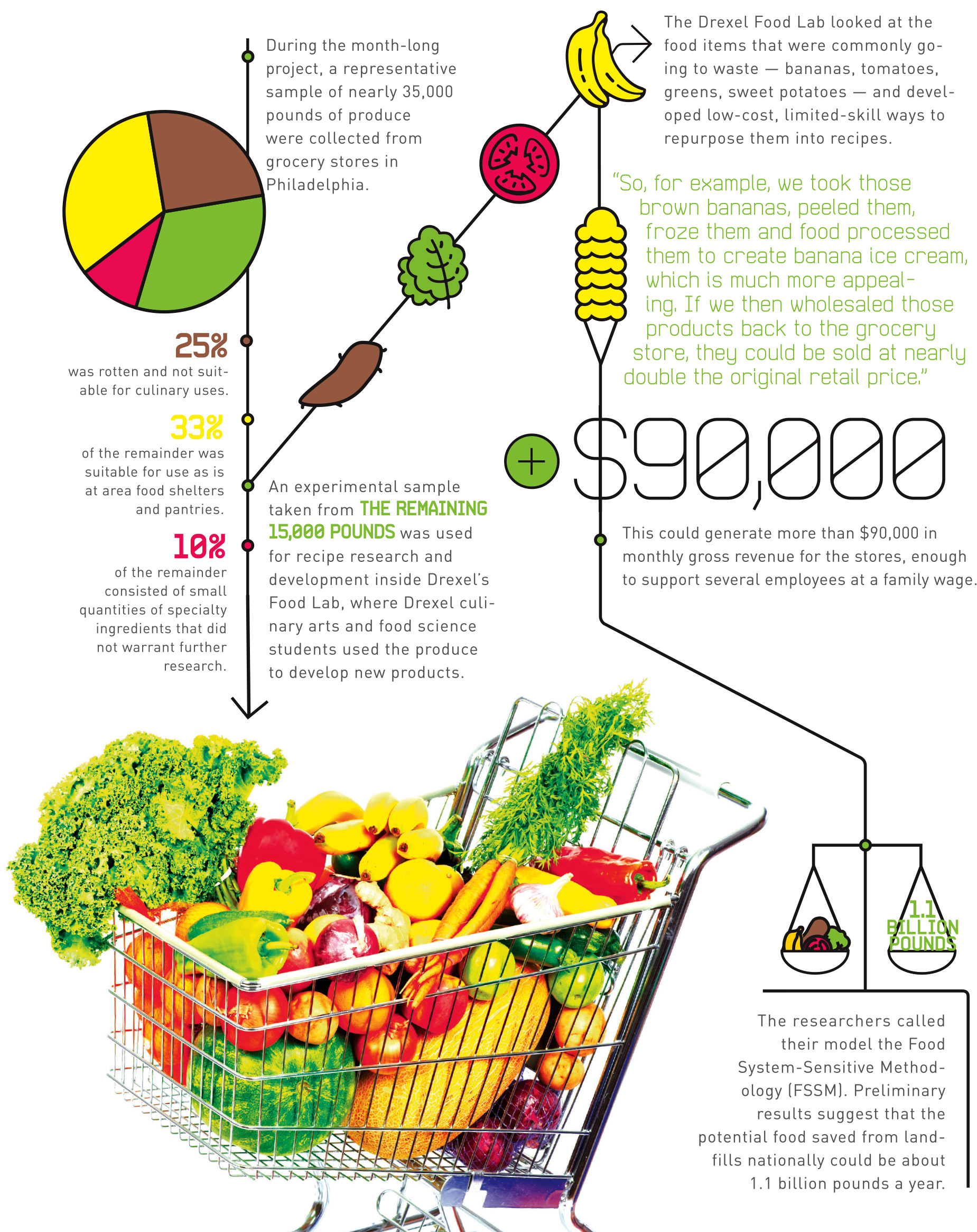Nowhere is the problem of food waste more obvious than at supermarkets, where fresh produce is routinely tossed out for cosmetic reasons.
“If I offered you a bruised banana, you probably wouldn’t be interested,” says Professor Jonathan Deutsch. “But what if I offered you some banana ice cream on a hot summer day? I bet you’d find that a lot more appealing.”
It was this simple observation that inspired researchers to explore ways to recover supermarket surplus food and repurpose it to feed hungry people, generate revenue and even create jobs.

Deutsch, along with researchers from the University of Pennsylvania, Cabrini College and the Environmental Protection Agency, piloted a surplus food management model in West Philadelphia in 2015 that diverted fresh-but-unsold fruit and vegetable groceries from landfills and processed the food for donation or for new businesses.
If diverted to new foods, each of the country’s 46.1 million SNAP recipients could figuratively receive an equivalent of 24 pounds of food a year.
“An important way to address global food security is to make better use of the food already produced,” the researchers wrote. “[The model] could help relieve chronic hunger and address the cost barriers that prevent these important sources of healthy dietary nutrients from reaching lower-income Americans.”

